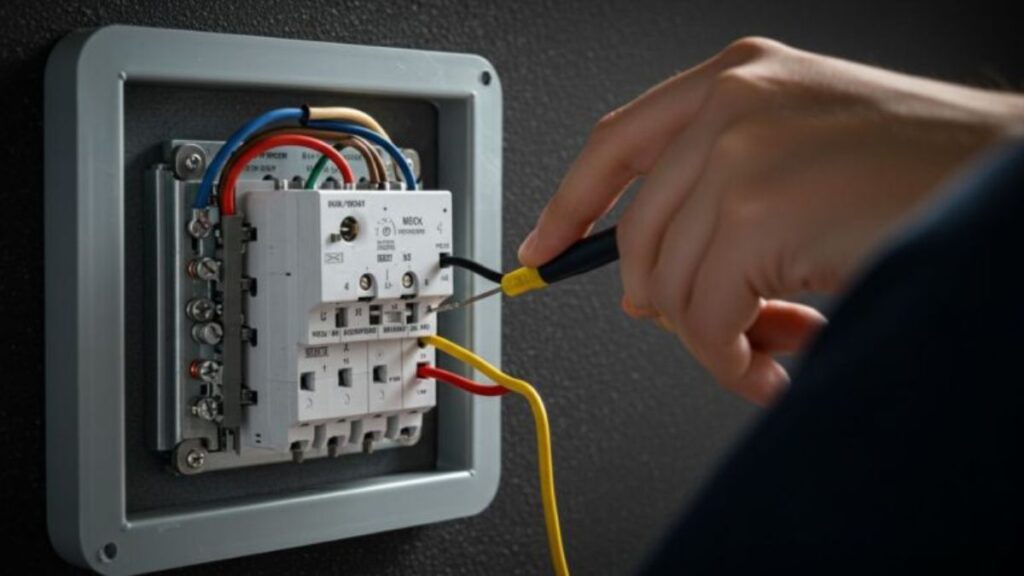Electrical systems are foundational to any property, whether residential or commercial. An electrical inspection report is a detailed document that evaluates your electrical infrastructure’s safety, function, and compliance. This kind of inspection is not merely a routine check—it is a vital step toward ensuring that wiring, fixtures, and circuits perform correctly and are up to code. Homeowners, property buyers, landlords, and tenants may require an inspection for peace of mind, insurance validation, or legal compliance.
Understanding what this report includes can help prevent fire hazards, overloads, or unexpected system failures. Whether you’re working with an electrician in Spring, TX, or reviewing the findings independently, knowing what to look for is important. We will explore what typically goes into a professional electrical inspection report and why each section matters, especially when long-term safety and operational integrity are the goals. From visual observations to code violations, the document offers insights that allow informed decision-making and timely maintenance or upgrades.
Core Elements Found in an Electrical Inspection Report
General Information and Scope of Inspection
At the beginning of any electrical inspection report, you can expect to find an overview that outlines the basic facts: property address, date of inspection, and the name of the inspector or company conducting the evaluation. This section also explains the scope of the inspection, including what areas were assessed and whether the inspection was visual only or included hands-on testing. For example, in some properties, panels may be opened for a detailed look inside; in others, only visible components are reviewed.
This part may also state if certain systems or areas were inaccessible during the visit, which can affect the completeness of the report. These initial details create a clear record for property owners and future inspectors, offering a baseline for subsequent evaluations. Knowing the scope also helps in understanding the limitations of the findings, particularly if further invasive diagnostics are recommended later.
Condition of Main Electrical Panel and Circuit Breakers
The main electrical panel is the heart of a property’s electrical system, and inspectors pay particular attention to its condition. This report section usually includes notes on the panel’s manufacturer, amperage rating, presence of rust or corrosion, signs of overheating, and whether it appears outdated. Breakers are examined to match the panel’s specifications and function properly. If there are signs of tampering, double-tapping (two wires connected to a single breaker without approval), or improper labeling, these are flagged immediately.
Any defects or inconsistencies in the panel can pose serious risks, including fire hazards and system failure. The report may also reference national or local electrical codes the panel fails to meet, helping the property owner understand which changes might be legally required. A healthy panel ensures consistent energy flow and system stability, so its inclusion is one of the most vital parts of the report.
Assessment of Wiring and Connections Throughout the Property
Electrical wiring forms the network through which electricity travels; its integrity is crucial for safety and functionality. The report will document the type of wiring found—such as copper or aluminum—and its condition, including whether it shows signs of wear, improper splicing, or outdated materials like knob-and-tube or cloth wiring. Inspectors also evaluate whether wires are properly secured, housed in conduits where necessary, and safely distanced from potential heat sources. The condition of connections within junction boxes and outlets will also be reviewed, as loose or exposed wiring poses significant risks.
Additionally, these will be documented if there are signs of rodents, water damage, or previous unpermitted work. Unsafe wiring doesn’t just lead to outages or device malfunctions—it can trigger fires or electrocution. This section is often one of the most detailed, providing property owners with a comprehensive map of potential risks that need immediate attention or monitoring.
Functionality and Safety of Outlets, Fixtures, and Switches
Outlets and light fixtures may seem like small details, but they are where users interact with the electrical system most frequently. During an inspection, the condition and functionality of these elements are tested. Are the outlets grounded? Are there any signs of arcing or scorch marks? Do the switches function as intended? Inspectors often test for GFCI (Ground Fault Circuit Interrupter) protection in kitchens, bathrooms, and outdoor areas—locations prone to moisture. If an outlet fails to trip when tested, it’s flagged as a safety concern.
Similarly, protection of AFCI (Arc Fault Circuit Interrupter) may be required in bedrooms and living areas. Loose or improperly installed fixtures can indicate DIY modifications or aging systems. This section may include images or diagrams to illustrate particular areas of concern. Ensuring that outlets and fixtures are safe and responsive protects people from shocks and safeguards devices from power fluctuations or short circuits.
A professional electrical inspection report is more than just a checklist—it is a vital tool for safeguarding your property, protecting its occupants, and planning for future improvements. Every section provides actionable insights, from documenting the main electrical panel’s condition to detailing the state of wiring and outlet safety. Whether preparing to sell, buy, renovate, or simply maintain your property, knowing what to expect from such a report ensures you won’t be caught off-guard by hidden hazards or compliance issues. We have explored how each section contributes to an overall understanding of electrical health, helping property owners take informed steps forward. This level of transparency is essential for creating a safe and efficient living or working environment.







